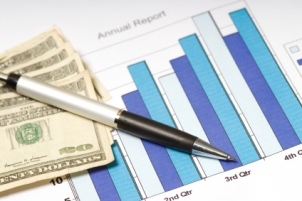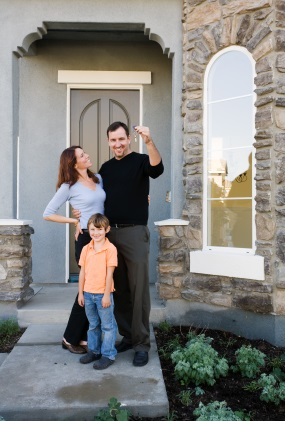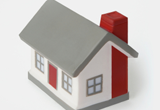
Foreclosure Sales Decrease Drastically During 2Q
By Stevie Duffin Updated on 12/14/2012By Daniel Duffield
Foreclosures and sales of bank-owned properties declined drastically during the second quarter as banks strategize to accommodate the current housing market.
Despite this decrease, the portion of all foreclosure sales in the U.S. rose during April and June, according to foreclosure reporting firm RealtyTrac Inc.
With fewer bank-owned homes selling and a higher demand during the home-buying season of spring, sales prices have risen. Homes owned by the bank and in the foreclosure process have seen the largest annual increase in mean sales price since 2006, before the housing market collapse, said the firm.
Vice president of RealtyTrac, Daren Blomquist, stated that this pricing increase essentially comes down to simple supply and demand; with limited supply and a strong demand, prices would naturally increase during the spring period.
As of July, 1.47 million U.S. homes are foreclosing at some stage. Of the 620,751 homes possessed by lenders, approximately 15% have been on the market, according to RealtyTrac.
The banks’ careful approach to the sale of foreclosed homes has led to higher prices in places such as Las Vegas, where the amount of bank-owned homes decreased to a 6.2-month supply during June.
In addition, the number of foreclosure properties being put up for sale has decreased due to many foreclosure cases being held up in court while banks attempt to sort through claims of abuse on the foreclosures. In February, a $25 billion settlement began a trend of lenders addressing backlogged foreclosures, and the number of homes going through foreclosure has steadily increased.
However, those properties, if they fully progress through the foreclosures, may not hit the housing market until 2012.
These factors have created a second-quarter climate of foreclosure sale decline, including bank-owned homes and homes within the process, which most commonly result in short sales when lenders agree to sell the home for less than the owed balance of the mortgage.
Increasingly, lenders have chosen short sales over the painstaking process of waiting for defaulted loans to undergo the foreclosure procedure.
Short sales on properties that had not even begun foreclosure increased 18 percent from January to May when compared with the same months during 2011, according to RealtyTrac.
Blomquist also said that, to lenders, selling bank-owned properties has become much less attractive than in the past due to the extra risks one must assume.
All included, 224,429 homes within foreclosure were bought during quarter two, down 12 percent from the first quarter and down 22 percent from last year’s second quarter, said RealtyTrac.
Although foreclosure sales have dropped, the portion of foreclosed homes sold increased.
Including the selling of formerly inhabited homes and new homes, foreclosure sales tallied 23 percent of all U.S. home sales, demonstrating a 22 percent increase in the first quarter and a 19 percent increase from a year earlier, said the firm.
Though increasing, the portion of foreclosure sales has not exceeded the first-quarter 2009 measurements which peaked at 45% of all home sales. During the pinnacle of the housing market boom in 2005, foreclosures composed a small 1 percent of all home sales.
Homebuyers that purchased foreclosed homes during the second quarter additionally paid more, averaging $170,040 at a 6% increase from the first quarter of 2012 and a 7% increase from last years recordings.
Although more expensive, foreclosed property prices still show a 32% discount compared to the average price of homes not going through a foreclosure. According to RealtyTrac, this discount grew from 30 percent in the first two quarters of 2011.
The widening price gap between foreclosure and non-foreclosure sales is indicative of the increasing home prices corresponding to higher sales levels this year.
According to the Standard & Poor’s/Case Shiller Index, June 2012 saw the first year-over-year growth for home prices since September of 2010.
New home sales for the second quarter rose 18 percent compared with last year. As of July, they have increased 25% from last year’s measurements. Furthermore, sales of previously inhabited homes increased 9 percent from April to June, rising 10 percent in July as compared with July of 2011.

Didn't find the answer you wanted? Ask one of your own.
-
 What You Need To Know About Escrow
View More
What You Need To Know About Escrow
View More
-
 President Obama Initiates Lower FHA Mortgage Insurance Premiums
View More
President Obama Initiates Lower FHA Mortgage Insurance Premiums
View More
-
 What is Quantitative Easing?
View More
What is Quantitative Easing?
View More
-
 The 5 New Mortgage and Housing Trends for Summer 2013
View More
The 5 New Mortgage and Housing Trends for Summer 2013
View More
-
 Fannie Mae profitability skyrockets
View More
Fannie Mae profitability skyrockets
View More
-
 Foreclosure protections for more soldiers after lawmakers draft bill
View More
Foreclosure protections for more soldiers after lawmakers draft bill
View More
-
 FHFA: HARP success follows low mortgage rates, February refinance volume strong
View More
FHFA: HARP success follows low mortgage rates, February refinance volume strong
View More
-
 Use of Mortgage Interest Deduction Depends on Where You Live
View More
Use of Mortgage Interest Deduction Depends on Where You Live
View More
-
 HUD will sell 40,000 distressed loans in 2013
View More
HUD will sell 40,000 distressed loans in 2013
View More
-
 Mortgage Principal Reduction Could Save Taxpayers $2.8 Billion
View More
Mortgage Principal Reduction Could Save Taxpayers $2.8 Billion
View More
-
 Mortgage Applications Regain Traction after Sluggishness, Rates Continue to Fall
View More
Mortgage Applications Regain Traction after Sluggishness, Rates Continue to Fall
View More
-
 HARP 3.0 Discussions Reveal Little Hope for HARP Update
View More
HARP 3.0 Discussions Reveal Little Hope for HARP Update
View More
-
 Home Prices Rise in February According to LPS Data
View More
Home Prices Rise in February According to LPS Data
View More
-
 Balancing Act: House Committee Hears Opposing Viewpoints Over Mortgage Interest Rate Deduction
View More
Balancing Act: House Committee Hears Opposing Viewpoints Over Mortgage Interest Rate Deduction
View More
-
 Near Record Low Mortgage Rates Buoy Housing Recovery
View More
Near Record Low Mortgage Rates Buoy Housing Recovery
View More
Related Articles
Ask our community a question.
Searching Today's Rates...

Featured Lenders
Kat Whitman
Whitman Met, Inc.
Sacramento, CA
Cameron Burke
Vision One Mortgage
Huntington Beach, CA
Lisa Stepp
RBS Citizens
Clifton Park, NY

